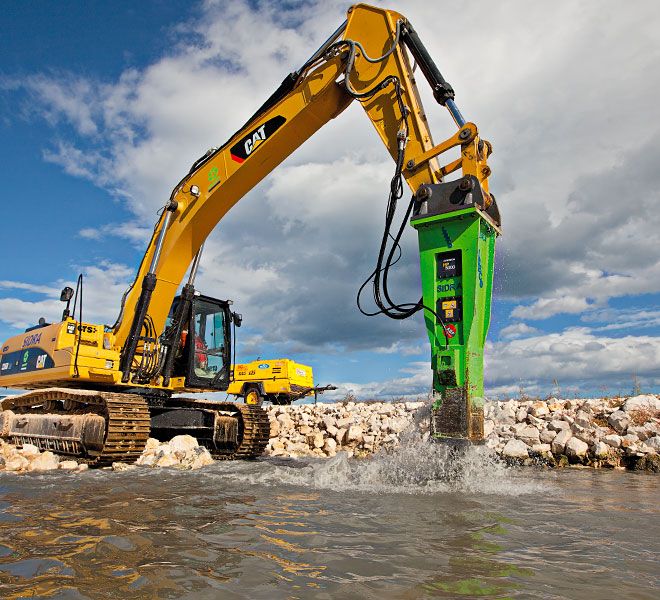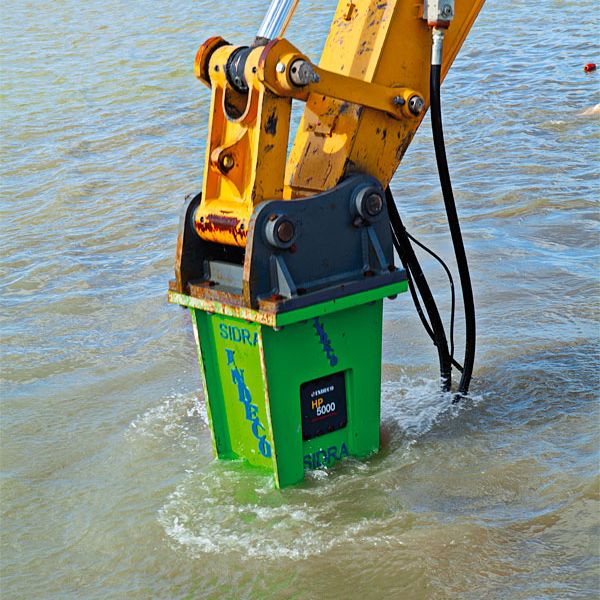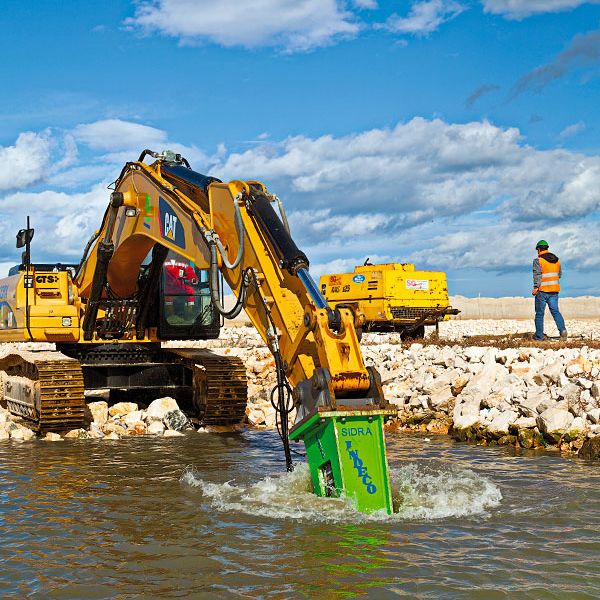The Indeco HP 5000 ABF at work in the construction of new commercial port of Molfetta
In more than two months of submarine excavations, it has shown excellent reliability, without ever needing any particular maintenance.
When it is finished, the new commercial harbour in Molfetta, in the south-eastern region of Apulia, near Indeco’s hometown of Bari, will be the second-biggest marine infrastructure in Italy, after the Mose in Venice. A simply colossal project costing around 60 million euros, which involves a number of dredgers, the largest of which measure around 50 metres in length.
The project was commissioned by the Municipality of Molfetta to the Temporary Joint Venture (or ATI, in Italian) Molfetta New Port, a consortium headed up by CMC – the Ravenna-based Co-operative of Bricklayers and Concrete Workers, which specialises in civil construction and infrastructure, alongside Sidra – Società Italiana Dragaggi, a specialist dredging company, and the Pietro Cidonio building firm, which makes marine pontoons out of reinforced concrete.
Given its complexity, the project is divided into several different phases. The lowering of the sea floor to create the smaller quay involved the Indeco HP 5000 ABF hydraulic breaker – weighing 3000 kilograms – mounted on a Caterpillar 336D LN and customised with the Sidra company colours, i.e. green. The quay, which is built on top of artificial concrete boulders, is 200 metres long, and will include a slipway for smaller vessels.
The aim of the HP 5000 ABF, which is part of the Indeco maxi-breaker range, was to lower the seabed to a depth of one to three metres by excavating down through the area’s typical stratified limestone; the excavations took two and a half months to complete, and measured around 250 metres in length by seven metres in width. Once the work had reached the level of the base of the foundations, divers helped to flatten out a working surface on which artficial boulders – weighing a total of 30 tons – were then placed by crane.
The breaker being used is equipped with the underwater kit, to keep water away from the internal parts of the breaker. The kit is made up of a threaded connector, a steel protection cover and a tube connecting it to a compressor. In this particular case, the hardest part of the job was caused both by the irregularity of the sea floor, and by the lack of visibility down at the sea bottom caused by the dust and pulverised limestone.









